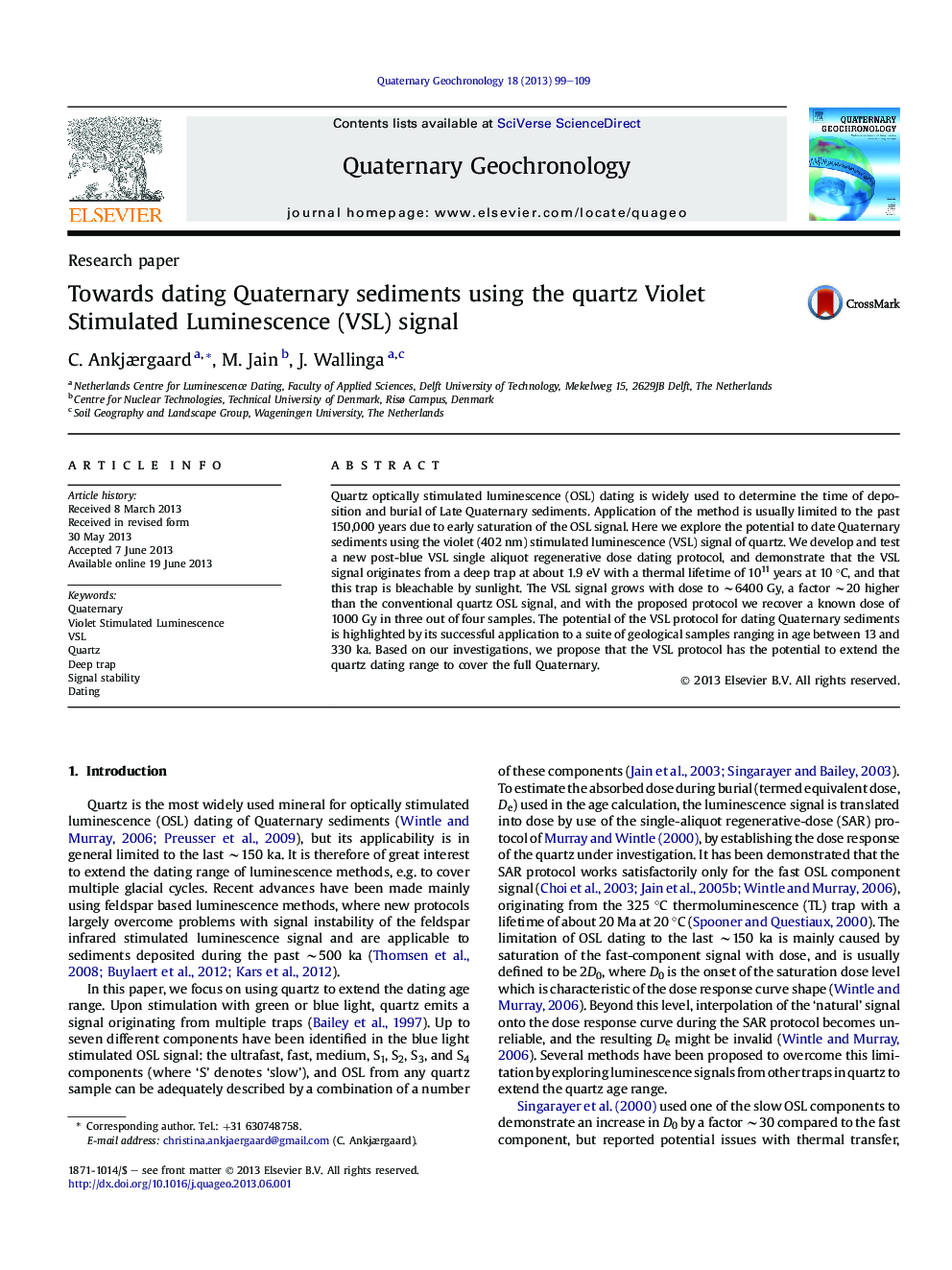| Article ID | Journal | Published Year | Pages | File Type |
|---|---|---|---|---|
| 6442686 | Quaternary Geochronology | 2013 | 11 Pages |
Abstract
Quartz optically stimulated luminescence (OSL) dating is widely used to determine the time of deposition and burial of Late Quaternary sediments. Application of the method is usually limited to the past 150,000 years due to early saturation of the OSL signal. Here we explore the potential to date Quaternary sediments using the violet (402 nm) stimulated luminescence (VSL) signal of quartz. We develop and test a new post-blue VSL single aliquot regenerative dose dating protocol, and demonstrate that the VSL signal originates from a deep trap at about 1.9 eV with a thermal lifetime of 1011 years at 10 °C, and that this trap is bleachable by sunlight. The VSL signal grows with dose to â¼6400 Gy, a factor â¼20 higher than the conventional quartz OSL signal, and with the proposed protocol we recover a known dose of 1000 Gy in three out of four samples. The potential of the VSL protocol for dating Quaternary sediments is highlighted by its successful application to a suite of geological samples ranging in age between 13 and 330 ka. Based on our investigations, we propose that the VSL protocol has the potential to extend the quartz dating range to cover the full Quaternary.
Related Topics
Physical Sciences and Engineering
Earth and Planetary Sciences
Geochemistry and Petrology
Authors
C. Ankjærgaard, M. Jain, J. Wallinga,
